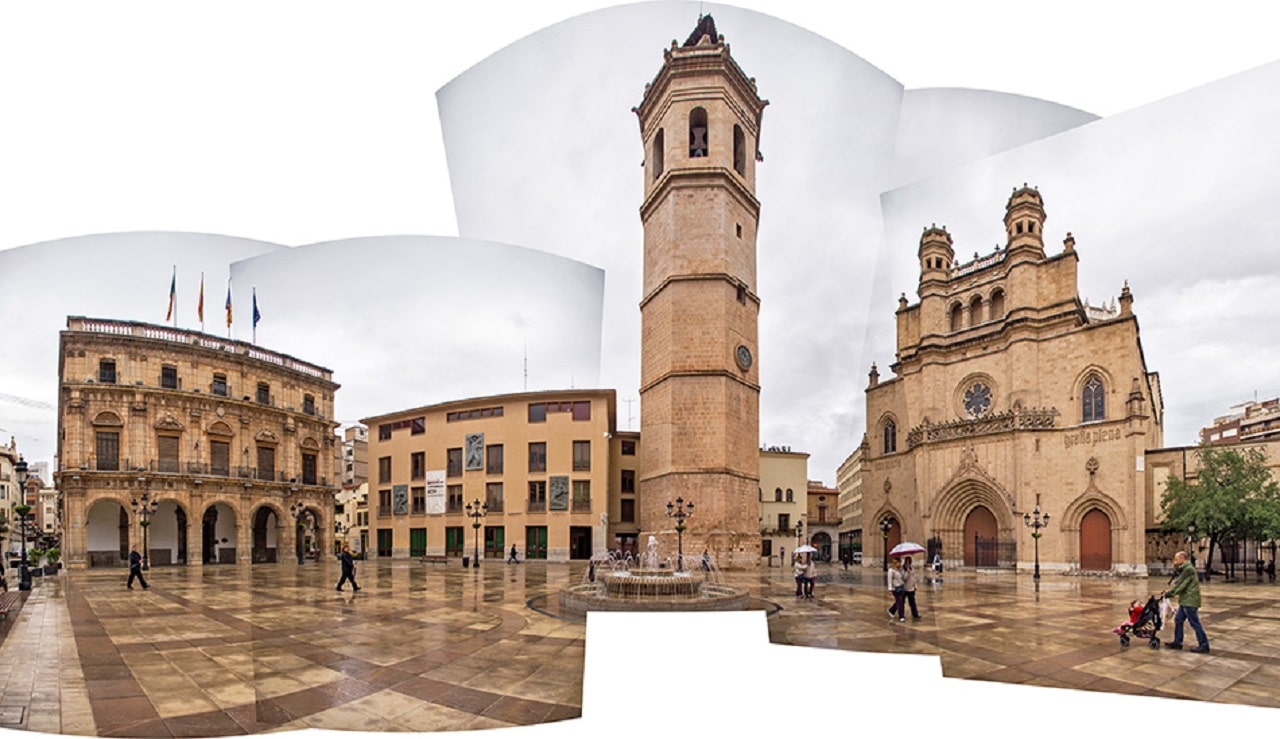
It is very possible that you have ever wondered what to see in Castellón de la Plana because this city is not usually among the most touristic. However, it has a lot to offer both from a heritage point of view and in terms of beaches and nature.
Capital of the homonymous province, in which beautiful summer towns abound, such as Peñíscola o Benicasim, the city was founded in 1252 when the inhabitants of Cerro de la Magdalena descended to La Plana. They did it authorized by the king James I of Aragon and, therefore, even today those of the Magdalena are the festivals of the locality. And, by the way, you will be interested to know that they are declared as international tourist interest. But, without further ado, we are going to show you what to see in Castellón de la Plana.
Co-Cathedral of Santa María la Mayor
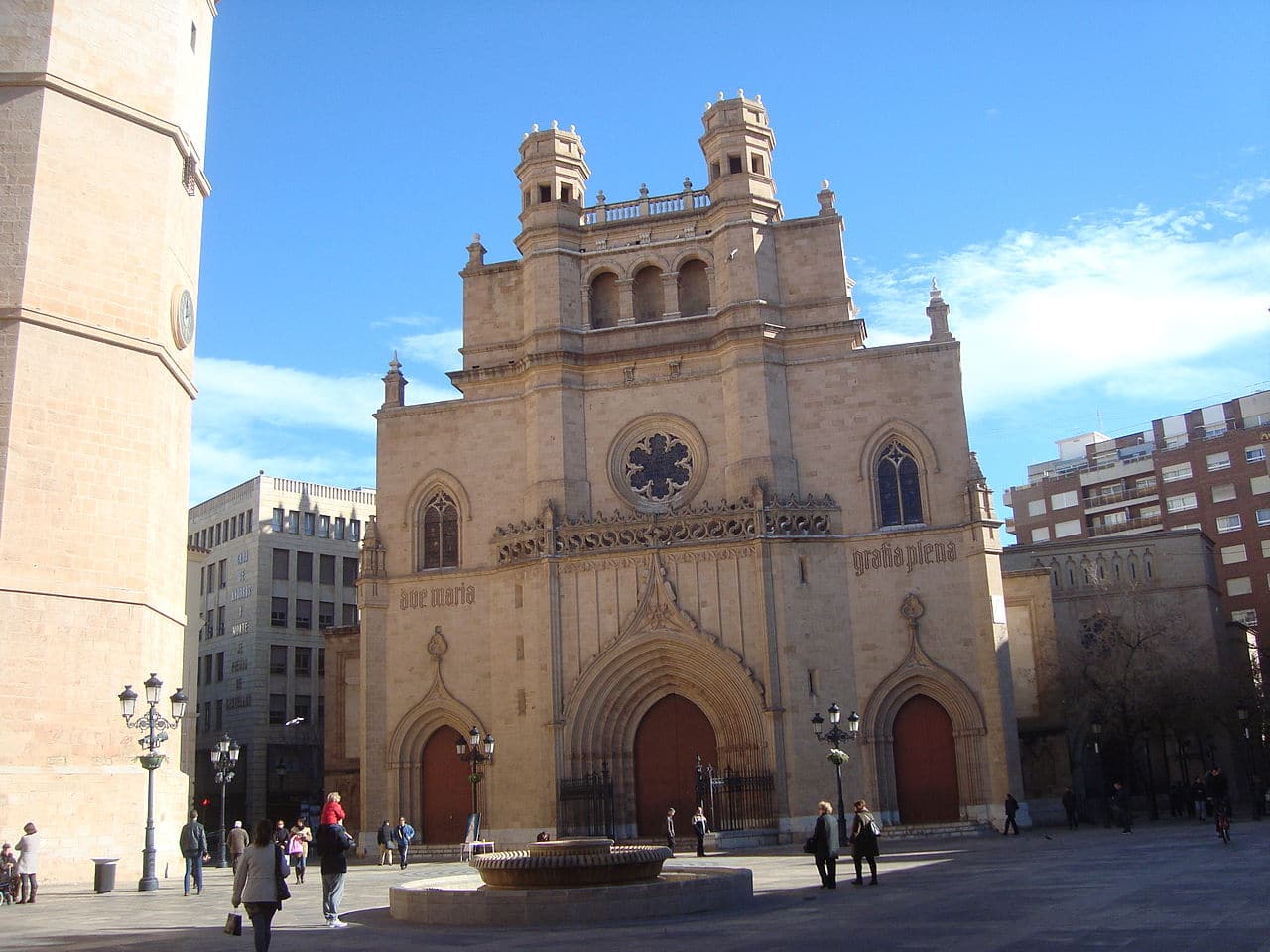
Co-Cathedral of Santa María la Mayor
Interestingly, it is one of the most modern co-cathedrals in Spain. The primitive temple was built in the 1936th century and, already in the 2009th, another one was built that was demolished in XNUMX. For this reason, the current one was finished in XNUMX with the completion of the cloister and the chapter house.
It's style neo-gothic and it has a Latin cross floor plan with three naves covered with a ribbed vault. The head is finished off with a pentagonal apse and the cruise with a dome. Also noteworthy in the temple are its precious stained glass windows and the liturgical instruments that are housed in its museum. But, perhaps the most outstanding element of the co-cathedral is the one that we are going to show you next.
The El Fadrí bell tower, essential among what to see in Castellón de la Plana
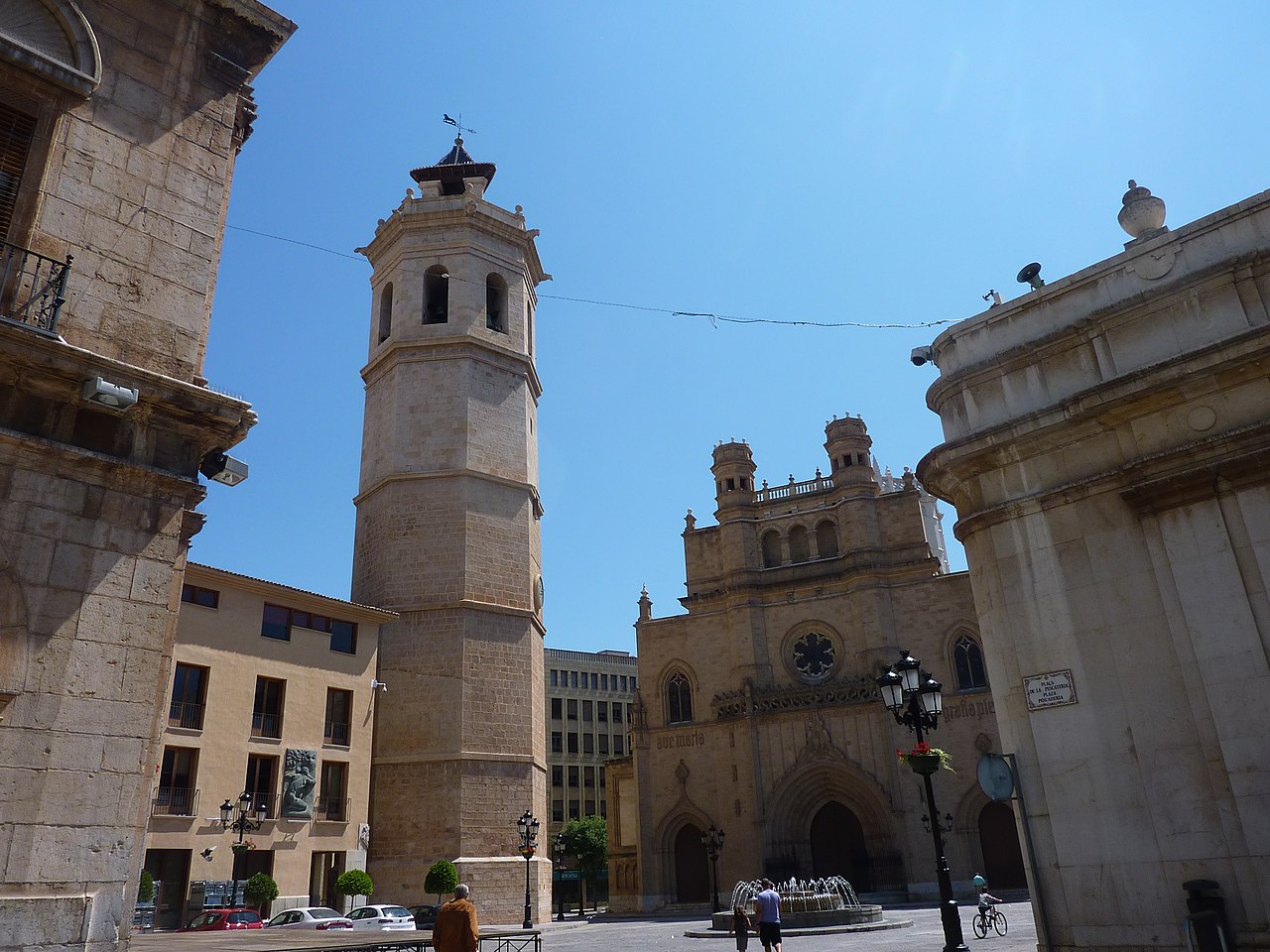
The tower of El Fadrí, symbol of Castellón de la Plana
Indeed, we refer to Free-standing bell tower of the co-cathedral, known as the El Fadrí tower, which is next to it and is the authentic Flat city symbol. Its construction began in the fifteenth century, although it was not completed until the end of the sixteenth.
belongs to the style Valencian Gothic and has an octagonal plan. It also presents four bodies, which correspond to the prison, the bell ringer's house, the clock chamber and the bell chamber. However, these bodies do not correspond to the outer cornice lines.
At the top, you can also see a terrace topped with a beautiful triangular spire with Tuscan pilasters and covered by blue tiles. This was built in the 1656th century to replace a previous one that was destroyed in 58. The tower reaches a total height of XNUMX meters and the floors are connected by a spiral staircase.
Municipal Palace and Lonja del Cáñamo, the baroque architecture of Castellón
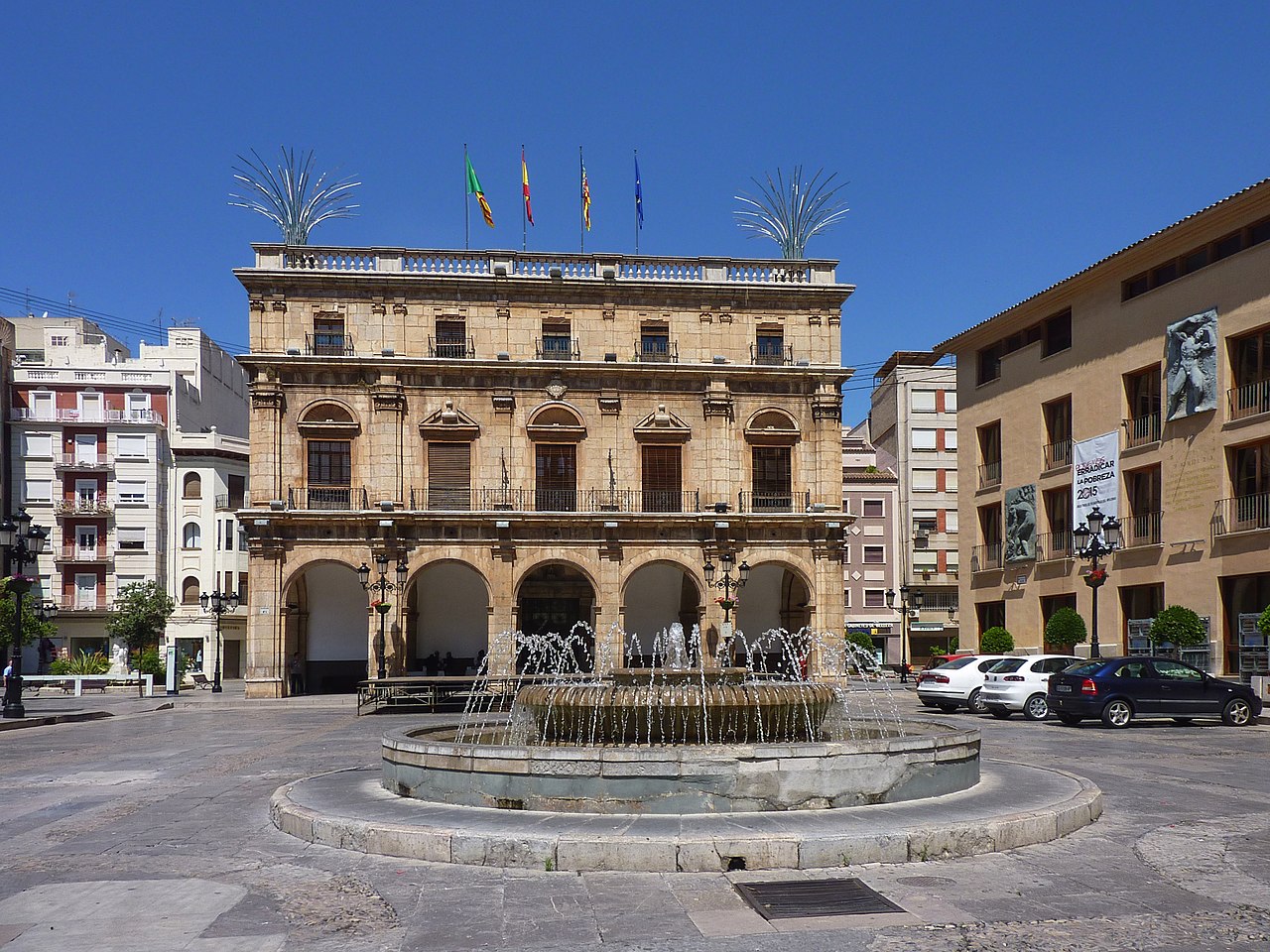
Municipal Palace, one of the essential things to see in Castellón de la Plana
The two best examples of Baroque architecture What to see in Castellón de la Plana are these two constructions. The Municipal Palace or City Hall building is located in the same square as the co-cathedral of Santa María. It was built between the XNUMXth and XNUMXth centuries and has a rectangular floor plan.
It is of exempt type and consists of three floors. The ground floor has a porch with five arches separated by pilasters adorned with Tuscan capitals. On the other hand, those on the main floor are Corinthian and separate three balconies, the largest central one. Finally, the highest floor is separated by a cantilevered cornice and the building is finished off with a balustrade.
For its part, the Hemp Market It is on Calle Caballeros and has a quadrangular floor plan. The ground floor also has arches supported by columns and semi-columns of the Tuscan order. Already in the XNUMXth century, a first floor was added that respects the whole. It has rectangular windows culminating in curved pediments on corbels and a continuous balcony. Finally, a classic cornice topped with vases closes the building.
Basilica of Our Lady of Lidon
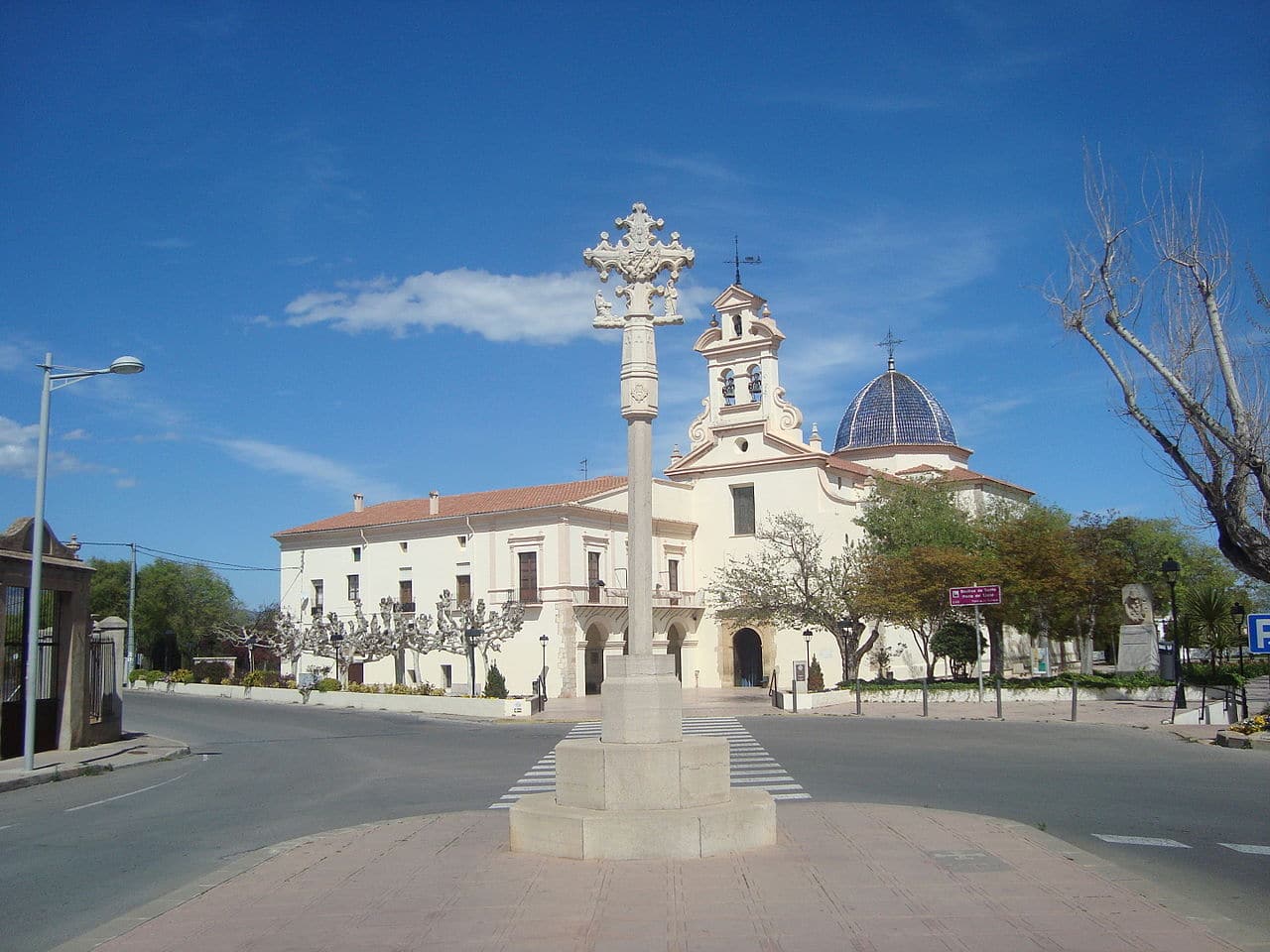
Basilica of Our Lady of Lidon
It is the other great religious building to see in Castellón de la Plana. It was built in the mid-XNUMXth century on the remains of a previous hermitage (in fact, the cover belongs to it). It also responds to the style baroque and it consists of a nave with side chapels and a slightly marked transept. Likewise, a dome and a lantern finish it off.
But we not only advise you to visit this basilica for its monumental beauty, but also because it houses the image of the Virgin of Lidon or Lledó, patron saint of the city of La Plana. According to legend, she was found by a peasant while he was plowing his land at the foot of a hackberry or lidon. That is why she was given this name.
But this church also has other outstanding images. Among them, another of the Virgin made in alabaster and dated in the XNUMXth century that was probably made by an Italian workshop. As a curiosity, we will tell you that the basilica of Lidón is considered the largest rural sanctuary in the entire Valencian Community.
Episcopal palace
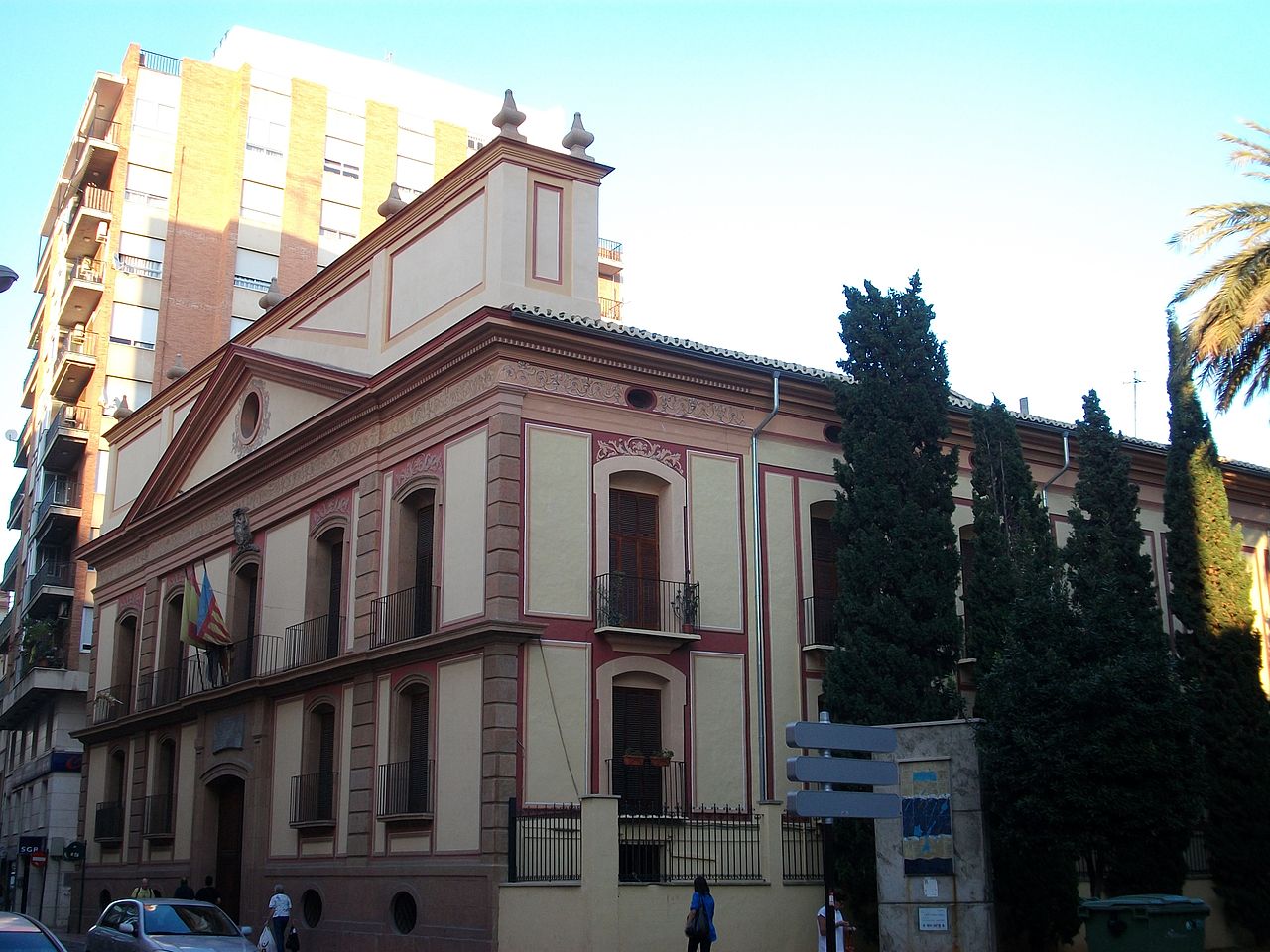
Episcopal Palace of Castellón de la Plana
Another essential monument to see in Castellón de la Plana is the Episcopal Palace, built at the end of the XNUMXth century in neoclassical. In fact, it is one of the few that exist in the city built with the standards of academicism.
It has two bodies and the main facade has a colorful pediment installed on a parapet and, below, the bishop's family coat of arms Antonio Salinas, who ordered the construction of the building. You can access the interior through a hallway with a lowered barrel vault from which you reach two stairs whose steps are decorated with Alcora tiles. However, the main or imperial staircase is located after the vestibule.
Already on the first floor are the habitable rooms of the palace and its floors also have Alcorense decoration. Finally, the top floor functions as an attic.
modernist monuments
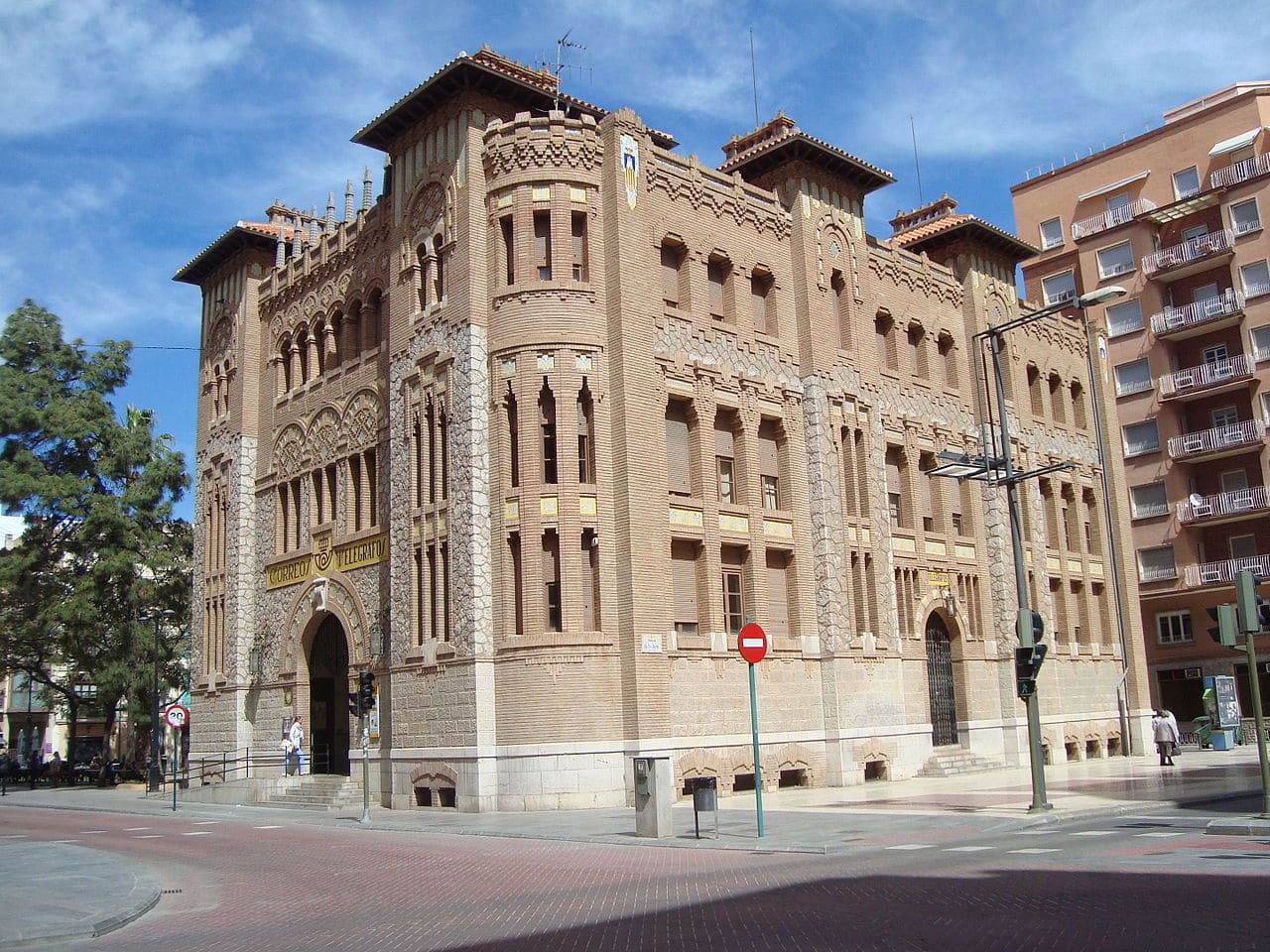
Post Office building, one of the modernist landmarks to see in Castellón de la Plana
Castellón also offers you a good set of modernist buildings. Among them stand out the old Casino, the post office and the bullring. The first was built in 1922 by the architect Francis Maristany and it presents a façade with a stepped profile. Although his style is eclectic, it shows clear references to the wonderful Salamanca Plateresque and, more specifically, from the Monterrey palace in the charra city.
For its part, the post Office It is a spectacular building Demetrius Ribes y Joaquin Dicenta which was completed in 1932. Responds to Valencian modernism combined with the neo-Mudejar style and its appearance will catch your attention, with curved corners preceded by turrets nestled in the same façade.
Finally, the bullring was the work of Manuel Montesinos placeholder image and it was inaugurated in 1887. Externally, its ground floor has brick arches that correspond to windows on the upper floor. Likewise, on the main façade there is a bronze medallion that represents the head of a bull and is the work of the sculptor Joseph Viciano.
architecture of military origin
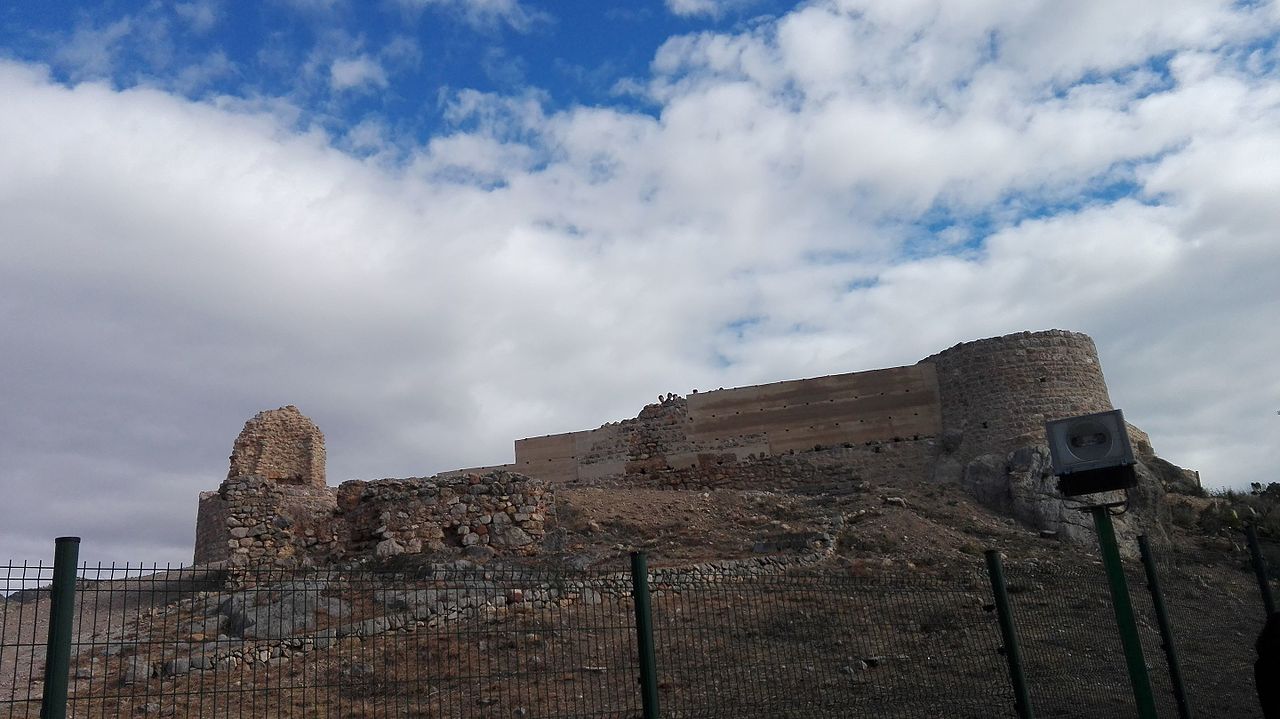
Fadrell's Castle
As for the monuments to see in Castellón de la Plana, we will end our tour with two of military origin. The first is the call Fadrell's castle or Castell Vell. It is a fortress of Muslim origin that is located on the Magdalena hill. Its construction is estimated in the XNUMXth century and it is currently in ruins.
The second is the alonso turret, which is part of the set of defensive constructions of the Spanish Levante. It is better preserved than the previous one and was built with a rectangular floor plan using masonry and ashlar.
The nature of Castellón de la Plana
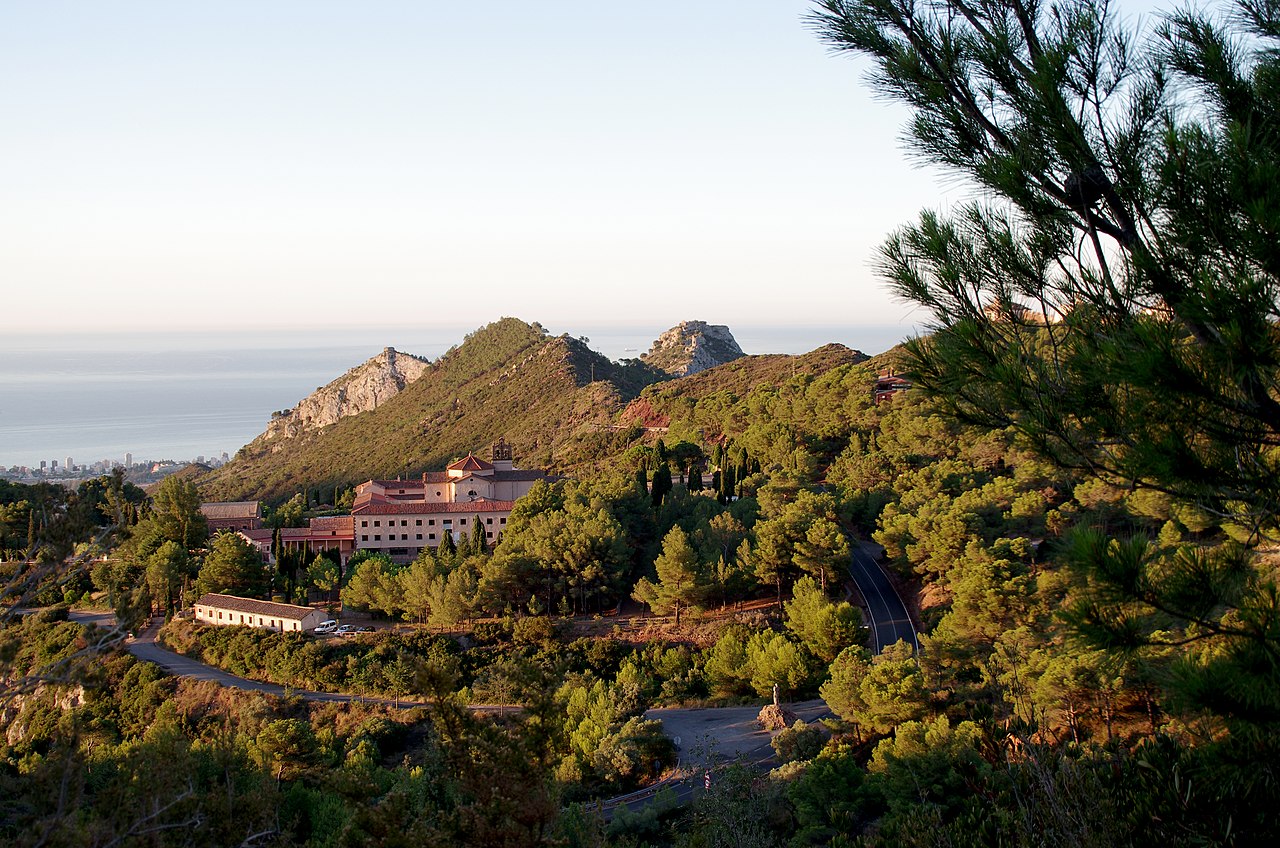
View of the desert of Las Palmas
To finish, we will tell you about three privileged places that you can see in Castellón. Yes of the Valencian Community try, we can not fail to mention the beaches. The town of La Plana does not have them, since it is four kilometers inland. However, just by traveling that distance, you will find three beautiful sandbanks. Are the Gurugú, Serradal and El Pinar beaches.
However, even more spectacular is the next thing to see in Castellón de la Plana. We talk about the Columbretes islands, which is located thirty miles from the coast and to which excursions are organized. They constitute an important natural and maritime reserve due to their ecological value.
Therefore, the only one where you can disembark is the Big Columbrete or Grossa Island, where you can see a XNUMXth-century lighthouse and several buildings for environmental research. But the really valuable thing about this boat trip has to do with its nature. If you like ornithology, you will be able to see several species in danger of extinction such as the Corsican seagull or Eleanor's falcon. Similarly, if you practice scuba diving, you will be fascinated by the seascape that surrounds the islands.
Finally, we also advise you to take a hiking tour through the desert of las palmas, a protected natural space of almost three thousand five hundred hectares that is articulated around the peak of Bartolo, about seven hundred meters high.
Despite its name, it has vegetation, mainly pine, strawberry tree and palm hearts. And also with a curious fauna in which the kestrel, the warbler, the horseshoe snake and the natterjack toad stand out.
In conclusion, we have shown you what to see in Castellón de la Plana. As you will have verified, there is much that the Levantine city offers you, despite not appearing in the great tourist itineraries. In any case, you can combine these with your visit to the town of La Plana, for example by staying in Oropesa del Mar. Don't you feel like getting to know it?